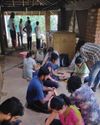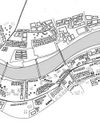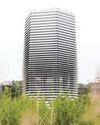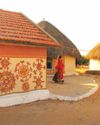In Conversation with IA&B, Sanjay Puri expresses his views on the rampant construction in India, vertical living and how smart architectural systems can improve daily lives.

IA&B: Did you always want to be an architect? Can you share with us your journey through the years while discovering your commitment towards the field of Architecture?
Sanjay Puri: I earlier toyed with the idea of being an artist or to be in advertising. Reading the book Fountainhead at the age of 16 made me decide to become an architect.
IA&B: What are your views on the rate at which cities are now growing?
SP: In India, cities are growing at an alarming pace. Without the augmentation of infrastructure in accordance with the growth of the cities, life in cities is becoming very difficult in every way. There is a lack of good public transport, open park areas, pedestrian spaces, cultural buildings, sport areas, parking spaces, insufficient roads and landscaped spaces in each of the Indian cities.
Buildings of any scale are being built next to each other without any overall density and master planning guidelines for the cities.
IA&B: You have been an advocate of building vertically, citing space constraints as the reason. How do you deal with the burdens of acquiring maximum profits, without consideration of open spaces and recreation areas?
SP: I do not advocate building vertically unless there is no option based upon the floor space index of the plot and the limitations of its size. However, if one has no option but to build vertically, the design should create a large amount of landscaped space for the community as well as individual open spaces for each house or apartment.
This story is from the {{IssueName}} edition of {{MagazineName}}.
Start your 7-day Magzter GOLD free trial to access thousands of curated premium stories, and 9,000+ magazines and newspapers.
Already a subscriber ? Sign In
This story is from the {{IssueName}} edition of {{MagazineName}}.
Start your 7-day Magzter GOLD free trial to access thousands of curated premium stories, and 9,000+ magazines and newspapers.
Already a subscriber? Sign In

Interlacing Perspectives
‘Meraki-2019’ A visionary Seminar series presented by Dr.Baliram Hiray College of Architecture, Bandra(East), Mumbai.

Facilitating A Community Through Architectural Practice
The humble, self-designed, self-built and organically planned home built by the majority of the world population rarely gets appreciated and critiqued as a viable lesson in architectural design.

The Art Of Solving Problems Creatively
The practice of architecture is perhaps incomplete without the complement of a variety of other arts.

Upcycling towards a playful tomorrow
Play is like the middle child, often forgotten, and always taking a back seat. For young kids, play can simply be running around, armwrestling with friends, building sandcastles on the beach, or singing popular music tracks in the shower.

Balancing The Poetics And Pragmatism Of Everyday Design
Humanity is faced with an oxymoronic crisis. The crisis involves the earth, the environment, impending looms of climate change, deforestation, loss of species, dwindling resources etc.

Just Give Me Some Space: Discussions And Beyond
Just Give Me Some Space (JGMSS) is Suha Riyaz Khopatkar’s debut book that paints a portrait of the dynamic life of an architecture student.

The Next In Vernacular Architecture
Architecture has become a capitalist.

Rethinking The Future: Architecture And Its Education
“I want to be like animals, the bird makes a nest in one or two days, the rat digs a hole in a night, but intelligent humans like us spend 30 years to have a house, that’s wrong.” - Jon Jandai

Uniting The Human-Scale With The City-Scale
London-based architect Usman Haque is famed for his interactive architectural systems, and for his exploration of newer, more effective ways of creating human engagement and interaction through his designs. Indian Architect & Builder caught up with him, to quiz him on a variety of topics such as his journey as an architect, his inspirations and philosophies, architects using the digital revolution to their advantage, and more!

Framing spaces
Almost every architect also doubles as a photographer or at least an enthusiast.